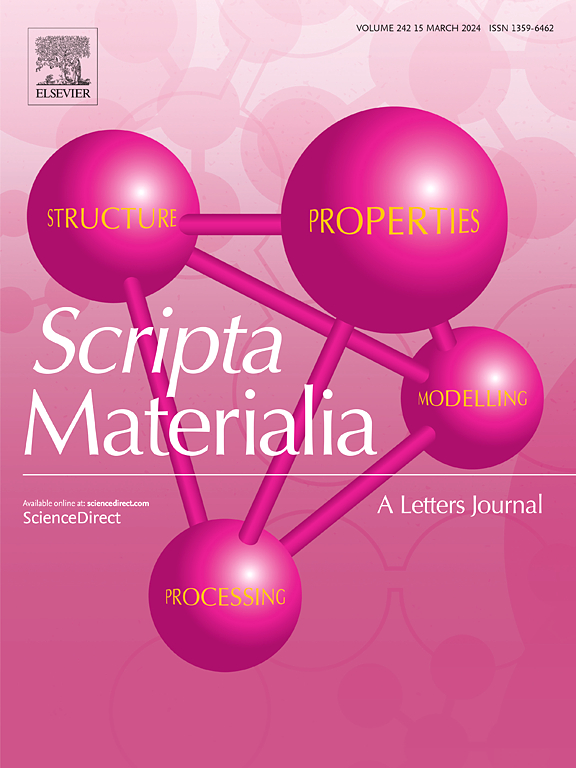配体辅助卤化铅钙钛矿纳米晶体中自捕获极化子激子特征的观察
IF 5.6
2区 材料科学
Q2 MATERIALS SCIENCE, MULTIDISCIPLINARY
引用次数: 0
摘要
我们报道了在胶体合成、配体辅助的CsPbBr3Cs4PbBr6纳米晶体中自捕获极化子激子特征的光谱观察。光致发光光谱的温度依赖性显示,在可见波长区域激子特征下方有宽肩发射,这是由于在Pb23+和Pb3+位置的电子和空穴的弛豫分别对应于自捕获极化子的形成。自困极化子激子发射峰向低能侧移动,其强度随温度从180 ~ 14 K的降低而显著增强。极化子-激子的能带分裂是由于Pb-6p轨道的强交换场在弛豫过程中驱动自捕获能级的变化,加上声子非调和性引起的特定晶格畸变;这些自捕获的载流子在激子发射强度恶化时起着非辐射中心的作用。本文章由计算机程序翻译,如有差异,请以英文原文为准。

Observation of self-trapped polaron exciton signatures in ligand-assisted lead halide perovskite nanocrystals
We report the spectroscopic observation of self-trapped polaron exciton signatures in colloidally synthesized, ligand-assisted CsPbBr3![]() Cs4PbBr6 nanocrystals. Temperature dependence of photoluminescence spectroscopy show broad shoulder emissions below the exciton signatures in visible wavelength region, which are attributed to the formation of self-trapped polaron excitons corresponding to the relaxation of electrons and holes localized at Pb23+, and Pb3+ sites, respectively. While self-trapped polaron exciton emission peaks shifted to lower energies side, its intensity substantially enhanced as the temperature decreases from 180 to 14 K. The polaron-excitons band splitting is attributed to the changes in self-trapped energy levels driven by the strong exchange field of Pb-6p orbitals during relaxation process, coupled with specific lattice distortions arising from phonon anharmonicity; those self-trapped carriers act like non-radiative centers for deteriorating exciton emission intensity.
Cs4PbBr6 nanocrystals. Temperature dependence of photoluminescence spectroscopy show broad shoulder emissions below the exciton signatures in visible wavelength region, which are attributed to the formation of self-trapped polaron excitons corresponding to the relaxation of electrons and holes localized at Pb23+, and Pb3+ sites, respectively. While self-trapped polaron exciton emission peaks shifted to lower energies side, its intensity substantially enhanced as the temperature decreases from 180 to 14 K. The polaron-excitons band splitting is attributed to the changes in self-trapped energy levels driven by the strong exchange field of Pb-6p orbitals during relaxation process, coupled with specific lattice distortions arising from phonon anharmonicity; those self-trapped carriers act like non-radiative centers for deteriorating exciton emission intensity.
求助全文
通过发布文献求助,成功后即可免费获取论文全文。
去求助
来源期刊

Scripta Materialia
工程技术-材料科学:综合
CiteScore
11.40
自引率
5.00%
发文量
581
审稿时长
34 days
期刊介绍:
Scripta Materialia is a LETTERS journal of Acta Materialia, providing a forum for the rapid publication of short communications on the relationship between the structure and the properties of inorganic materials. The emphasis is on originality rather than incremental research. Short reports on the development of materials with novel or substantially improved properties are also welcomed. Emphasis is on either the functional or mechanical behavior of metals, ceramics and semiconductors at all length scales.
 求助内容:
求助内容: 应助结果提醒方式:
应助结果提醒方式:


